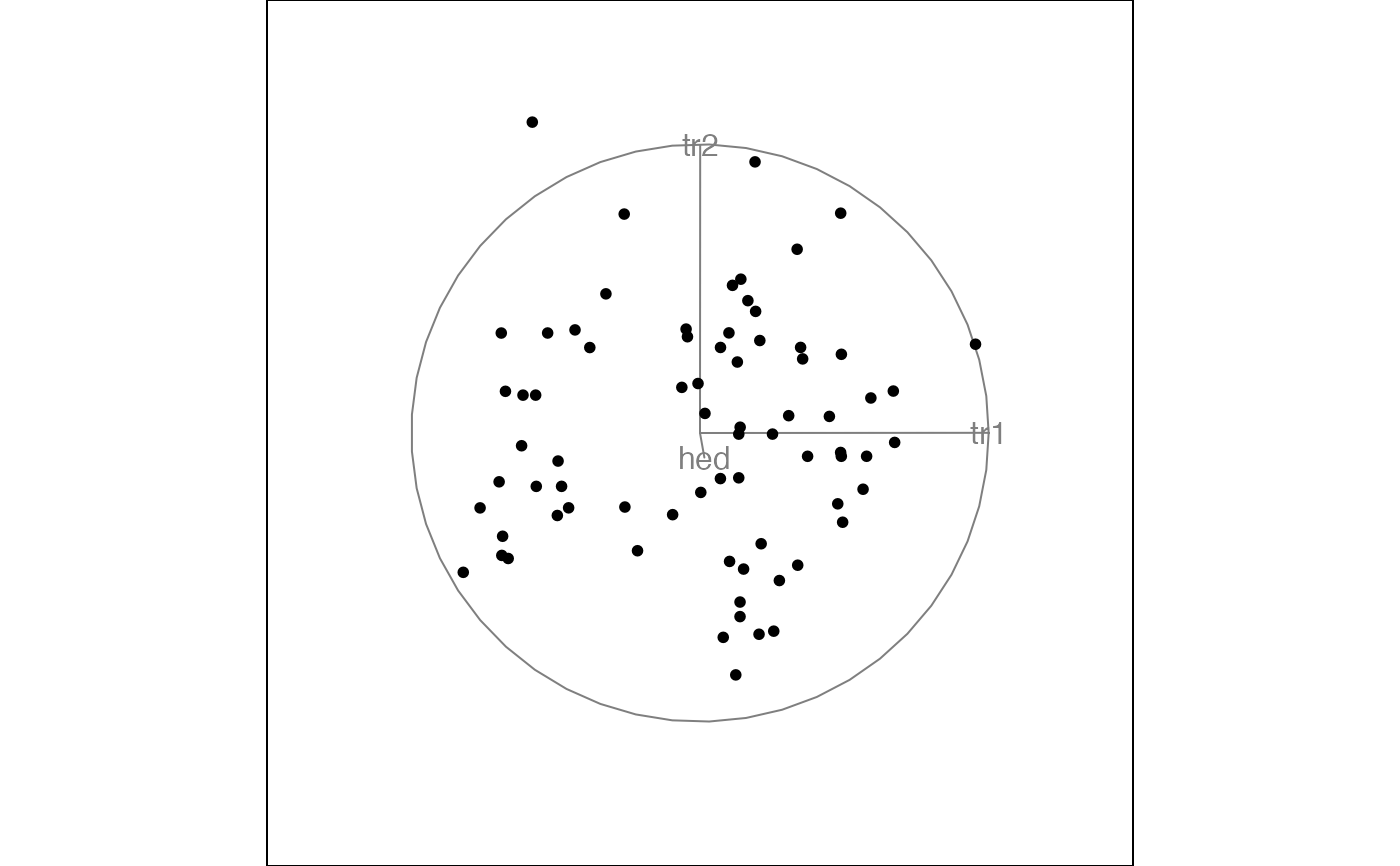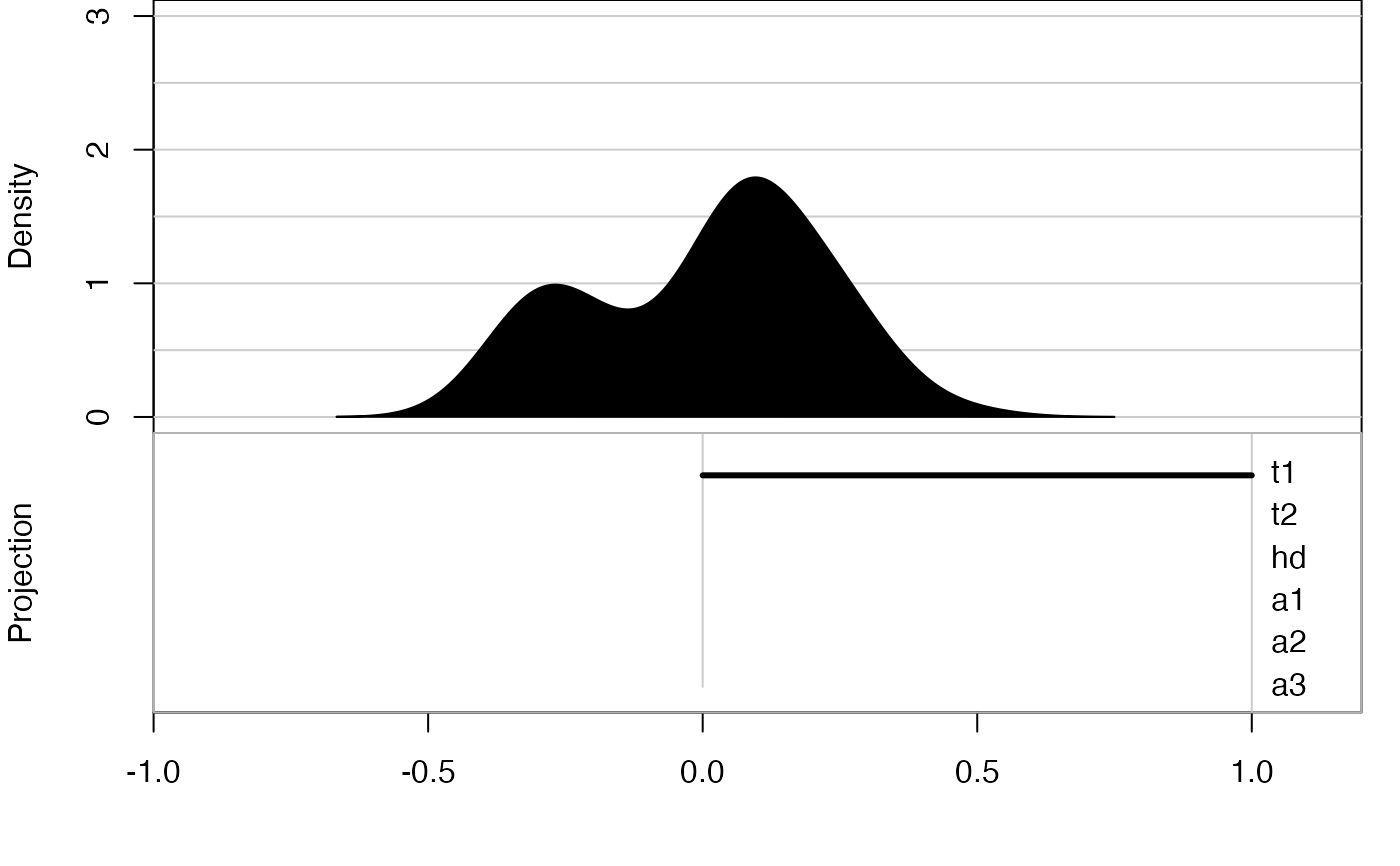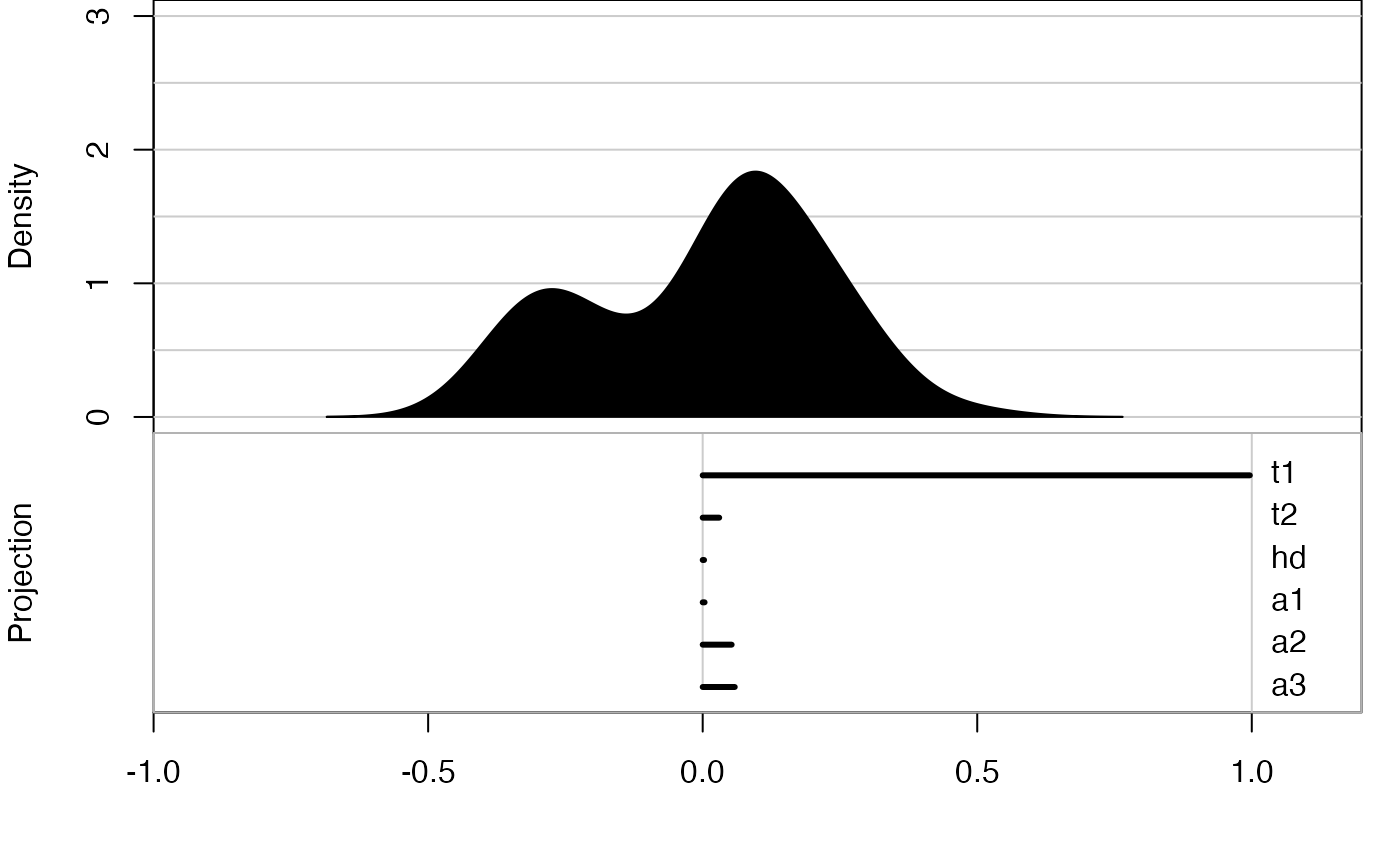The planned tour takes you from one basis to the next in a
set order. Once you have visited all the planned bases, you either stop
or start from the beginning once more (if cycle = TRUE).
planned_tour(basis_set, cycle = FALSE)
planned2_tour(basis_set)Arguments
Details
Usually, you will not call this function directly, but will pass it to
a method that works with tour paths like animate,
save_history or render.
See also
The little_tour, a special type of planned tour
which cycles between all axis parallel projections.
Examples
twod <- save_history(flea[, 1:3], max = 5)
#> Converting input data to the required matrix format.
str(twod)
#> num [1:3, 1:2, 1:5] 1 0 0 0 1 ...
#> - attr(*, "data")= num [1:74, 1:3] 0.467 0.263 0.773 -0.145 -0.213 ...
#> ..- attr(*, "dimnames")=List of 2
#> .. ..$ : chr [1:74] "1" "2" "3" "4" ...
#> .. ..$ : chr [1:3] "tars1" "tars2" "head"
animate_xy(flea[, 1:3], planned_tour(twod))
#> Converting input data to the required matrix format.
#> Using half_range 3.5

 animate_xy(flea[, 1:3], planned_tour(twod, TRUE))
#> Converting input data to the required matrix format.
#> Using half_range 3.5
animate_xy(flea[, 1:3], planned_tour(twod, TRUE))
#> Converting input data to the required matrix format.
#> Using half_range 3.5

 oned <- save_history(flea[, 1:6], grand_tour(1), max = 3)
#> Converting input data to the required matrix format.
animate_dist(flea[, 1:6], planned_tour(oned))
#> Converting input data to the required matrix format.
#> Using half_range 4.4
oned <- save_history(flea[, 1:6], grand_tour(1), max = 3)
#> Converting input data to the required matrix format.
animate_dist(flea[, 1:6], planned_tour(oned))
#> Converting input data to the required matrix format.
#> Using half_range 4.4

